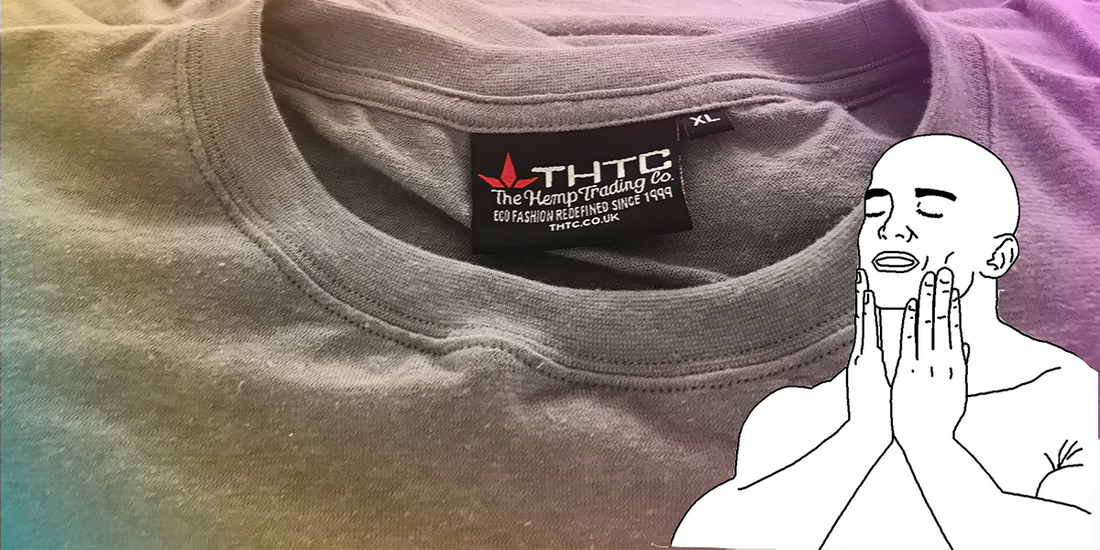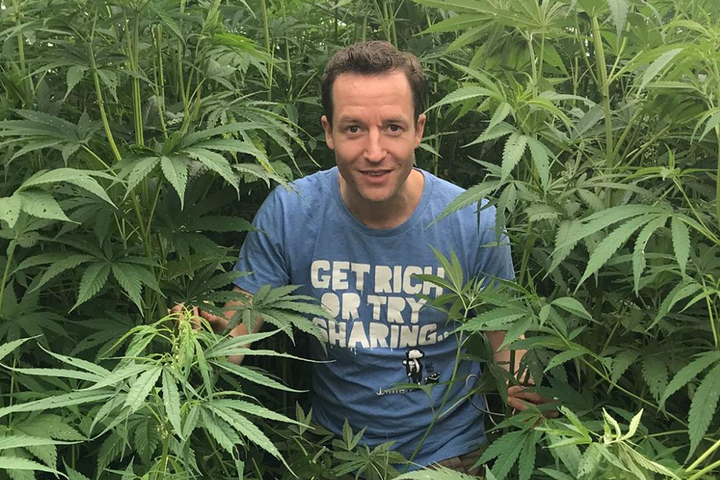It appears I've written yet another blog about the benefits of hemp. Unlike other brands, we're *definitely* not doing some weird SEO activities to attract more people to our fantastic eco-friendly hemp clothing website. (That's at least seven keywords, right there).
Today, I'm diving into something that should be front of mind for anybody when buying clothes - how they feel and why your (hemp) feelings matter.
When I was younger, I remember hemp material used to get a bit of flak in the clothing industry, due to its perception as stiff and rough. Classically, people often think of a monk's cassock or really stiff hippie shirts from the 1970s. It seems counterintuitive that a fibre could get softer over time - but it's true. This antimicrobial, absorbent and insulating natural fibre has more properties that we'll undoubtedly squeeze into various other 1,200-word online blogs.

Hemp: A Well-Beaten History
Since humanity started weaving cordage, baskets and clothing, hemp has been in the mix. Hemp farming is considered one of the earliest examples of human agriculture. Hemp fabric itself is actually among the softer fabric types. The ancient text, 'Er Ya' was the first-ever Chinese written dictionary over 2,000 years ago; it also documented cultural, agricultural and social happenings of the time. Here's a translation of its entry on hemp cultivation:
"Female hemp grows tall and straight. Its fibre is very thick and strong, and its seed can be eaten. The fibre of male hemp is thin and soft and can be used to spin cloth."
Most growers know male, and female cannabis/hemp plants produce very different things. It's fascinating to see how we discovered these dioecious traits early in human history. These persist even in the variations that contain no THC. Of course, back then, sustainability wasn't as big a drive - but hemp's multipurpose utility meant it followed humanity around quite a bit.
In this short account from colonial America, we can start to see how mechanical processing and handling starts to make hemp fibre more pliable, flexible and softer to work with:

Hemp processing in Colonial America, Source - Denis Diderot Encyclopedia 1762
In ancient Japan, for example, fabrics were designated by a pair of contrasting terms: Aratae - rough cloth, a little bit like thick sackcloth; and nigitae, a smooth material made soft through fulling (prolonged beating of fibres with a wooden mallet). Many plant fibres tend to tear and fall apart under repeated mechanical stress and combing - however, industrial hemp does not. As we've said, it has an extremely high tensile strength - more than steel or carbon fibre - all due to its cell structure.

In many parts of Japan, hemp is still considered a holy plant
The Science
While other - inferior - blogs will tell you that hemp gets softer over time due to how it absorbs water (or some other chutney), it is down to the very structure of the fibres, the arrangement of cellulose microfibrils in the plant - essentially, hemp’s ‘blood vessels’, making up it’s vascular tissue, and the length in which they naturally occur. I’ve massively paraphrased the actual science - but you can read it for yourself in the literature study, Hemp Fibre Properties and Processing Target Textile: A Review, by Malgorzata Zimniewska.
Unfortunately, this strong structure is also one of the reasons why it’s a little bit more difficult to process hemp fibre, versus other materials.
 Hemp Fibre - diagram courtesy of Zimniewska, 2011
Hemp Fibre - diagram courtesy of Zimniewska, 2011
Stiff Hemp Still Good?
As we’ve mentioned, there are several ‘grades’ of fibre softness available. In countries such as Korea, China and Japan, stiff hemp material is still used for formal and smart clothing. The hemp top’o, a traditional long outer coat, continues to be a symbol of an academic. In Korea’s Andong region, stiff coats like these are still held in high regard.

An old boy from Andong Region, Korea in a snappy hemp suit (Source: Evolution and Ethnobotany of Cannabis)
While the material is very stiff because of hemp’s high tensile strength, the fabric can actually be woven to be very fine, allowing for an expanded shape as well as cool air to pass through. In fact, the stiff-to-soft properties also meant that hemp wrapping became a feature of many swordsman’s grips in the region. While the fabric gets softer over time and wear - it still remains strong.
Final Words
Because of hemp’s amazingly tough cell structure and naturally long occurring shape, the more impact stressed on the fibre - in the form of beating, throwing, and indeed washing - actually softens up any remaining lignin in the fibres. To contrast, pure combed cotton can actually be quite short and weak, deriving their strength from the weave pattern and other materials (like polyester etc), that they’ve either been blended with or woven into.
Over the lifespan of a THTC hemp t-shirt, your garment will weather a lot of beatings - rain, wind, and work. Following our care guides, and respecting your clothes, keeping them away from hotrocks and the like, will ensure that it stays in one piece - and gets softer over time.



